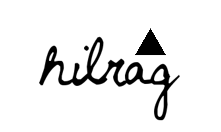ég er alveg roooosalega skotin í Mehndi eða Henna tattoo, eftir að vinkonur mínar komu frá Indlandi, allar með svona. Finnst þetta alveg rosalega fallegt, svo ég ákvað að lesa mér aðeins til um þetta. Stal smá texta af netinu, að vísu á ensku en það ætti ekki að vera ooof mikið vandamál..




Mehendi (Henna Tattoo, also known as Mehendi) is an ancient Indian Body Art. It is used to create intricate ethnic or contemporary designs and exotic patterns on various parts of the body, though traditionally it was applied to the hands and feet of ladies preparing for special auspicious ceremonies. The application of Henna is completely natural, non-permanent, painless and without any side-effects . While traditionally it had largely been the ornamental preserve of the ladies , men are increasingly finding it a better alternative to permanent tattoos.
Mehendi designs have traditionally fallen into four different styles. The Middle Eastern style is mostly made up of floral patterns similar to the Arabic textiles, paintings and carvings and do not usually follow a destinctive pattern. The North African style generally follows the shape of the hands and feet using geometrical floral patterns. The Indian and Pakistani designs encompass more than just the feet and hands and generally extend further up the appendages to give the illusion of gloves and stockings which are made up of lines, paisley patterns and teardrops. Lastly, the Indonesian and Southern Asian styles were a mix of Middle Eastern and Indian designs using blocks of color on the very tips of their toes and fingers. All of these styles remain popular today but have also been joined in popularity by celtic designs and chinese symbols. The point once again is to have fun with designs and experiment with them until you find something that you feel really passionate about.
In India, it is used at celebrations like weddings and other special occasions which are traditionally associated with transcendence and transformation. It is used for worship and work but not for the sake of vanity. It is traditional for the bride to get together with her friends and have them spend hours applying the henna to her skin and give her marriage advice in tandem. The patterns used for weddings are much more intricate and time consuming (than the everyday wear) and therefore the bride's friends have lots of time to give her advice on erotic activities for her wedding night, sexual pointers and tips during the hours that it can take to complete the design. The bride's henna must be more beautiful and intricate than anyone else's of course since it is, after all, her special day. Another interesting fact is that the bride has good reason to look after her henna for she is not expected to partake in housework until the henna is gone. This means that she will not be rubbing, scrubbing or tubbing a lot unless she really loves doing work at home.




2 comments:
Ótrúlega fallegt, langar í :)
Kv. Katla
I looove it ! elska líka rauð tattoo!
Post a Comment